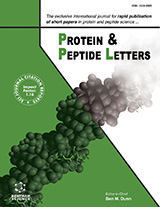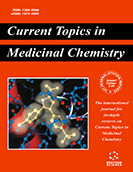Abstract
Nucleobindin-2 is a 420 amino acid EF-hand Ca2+ binding protein that can be further processed to generate an 82 amino terminal peptide termed Nesfatin-1. To examine the function of secreted Nucleobindin-2 in adipocyte differentiation, cultured 3T3-L1 cells were incubated with either 0 or 100 nM of GST, GST-Nucleobindin-2, prior to and during the initiation of adipocyte differentiation. Nucleobindin-2 treatment decreased neutral lipid accumulation (Oil-Red O staining) and expression of several marker genes for adipocyte differentiation (PPARγ, aP2, and adipsin). When Nucleobindin- 2 was constitutively secreted into cultured medium, cAMP content and insulin stimulated CREB phosphorylation were significantly reduced. On the other hand, intracellularly overexpressed Nucleobindin-2 failed to affect cAMP content and CREB phosphorylation. Taken together, these data indicate that secreted Nucleobindin-2 is a suppressor of adipocyte differentiation through inhibition of cAMP production and insulin signal.
Keywords: Nucleobindin-2, Nesfatin-1, adipogenesis, 3T3-L1, insulin, GST
Protein & Peptide Letters
Title:Secreted Nucleobindin-2 Inhibits 3T3-L1 Adipocyte Differentiation
Volume: 19 Issue: 9
Author(s): Yuko Tagaya, Aya Osaki, Atsuko Miura, Shuichi Okada, Kihachi Ohshima, Koshi Hashimoto, Masanobu Yamada, Tetsurou Satoh, Hiroyuki Shimizu and Masatomo Mori
Affiliation:
Keywords: Nucleobindin-2, Nesfatin-1, adipogenesis, 3T3-L1, insulin, GST
Abstract: Nucleobindin-2 is a 420 amino acid EF-hand Ca2+ binding protein that can be further processed to generate an 82 amino terminal peptide termed Nesfatin-1. To examine the function of secreted Nucleobindin-2 in adipocyte differentiation, cultured 3T3-L1 cells were incubated with either 0 or 100 nM of GST, GST-Nucleobindin-2, prior to and during the initiation of adipocyte differentiation. Nucleobindin-2 treatment decreased neutral lipid accumulation (Oil-Red O staining) and expression of several marker genes for adipocyte differentiation (PPARγ, aP2, and adipsin). When Nucleobindin- 2 was constitutively secreted into cultured medium, cAMP content and insulin stimulated CREB phosphorylation were significantly reduced. On the other hand, intracellularly overexpressed Nucleobindin-2 failed to affect cAMP content and CREB phosphorylation. Taken together, these data indicate that secreted Nucleobindin-2 is a suppressor of adipocyte differentiation through inhibition of cAMP production and insulin signal.
Export Options
About this article
Cite this article as:
Tagaya Yuko, Osaki Aya, Miura Atsuko, Okada Shuichi, Ohshima Kihachi, Hashimoto Koshi, Yamada Masanobu, Satoh Tetsurou, Shimizu Hiroyuki and Mori Masatomo, Secreted Nucleobindin-2 Inhibits 3T3-L1 Adipocyte Differentiation, Protein & Peptide Letters 2012; 19 (9) . https://dx.doi.org/10.2174/092986612802084546
| DOI https://dx.doi.org/10.2174/092986612802084546 |
Print ISSN 0929-8665 |
| Publisher Name Bentham Science Publisher |
Online ISSN 1875-5305 |
 44
44
- Author Guidelines
- Bentham Author Support Services (BASS)
- Graphical Abstracts
- Fabricating and Stating False Information
- Research Misconduct
- Post Publication Discussions and Corrections
- Publishing Ethics and Rectitude
- Increase Visibility of Your Article
- Archiving Policies
- Peer Review Workflow
- Order Your Article Before Print
- Promote Your Article
- Manuscript Transfer Facility
- Editorial Policies
- Allegations from Whistleblowers
Related Articles
-
The Emerging Role of Histology in the Choice of First-Line Treatment of Advanced Non-Small Cell Lung Cancer: Implication in the Clinical Decision-Making
Current Medicinal Chemistry Pre-hospital Fibrinolysis in the Management of Patients with ST Elevation Acute Coronary Syndrome: Review of the Evidence, Implementation and Future Directions
Cardiovascular & Hematological Disorders-Drug Targets Adrenomedullin: Roles for Structure and Function in Cardiac or Vascular Tissues
Current Hypertension Reviews Theaflavin Enriched Black Tea Extract Alleviates Diabetic Nephropathy by Suppressing Hyperglycaemia-Mediated Oxidative Stress and Inflammation in Streptozotocin-Induced Rats
The Natural Products Journal Spoligotyping for Identification of Pulmonary Tuberculosis with Type 2 Diabetes Mellitus Profiles in Warangal, T.S.
Anti-Infective Agents A Multicenter Prospective Hospital-based Cohort Study on the Efficacy and Safety of Pitavastatin
Current Diabetes Reviews Emerging Potential of Citrus Flavanones as an Antioxidant in Diabetes and its Complications
Current Topics in Medicinal Chemistry Resveratrol as a Potential Therapeutic Candidate for the Treatment and Management of Alzheimer's Disease
Current Topics in Medicinal Chemistry Monitoring Kidney Function in Neuroendocrine Tumor Patients Treated with <sup>90</sup>Y-DOTATOC: Associations with Risk Factors
Current Radiopharmaceuticals Momordica charantia and Type 2 Diabetes: From in vitro to Human Studies
Current Diabetes Reviews Pharmacology and Clinical Effect of Platonin, a Cyanine Photosensitizing Dye: Potential Molecular Targets
Current Pharmaceutical Biotechnology The Hypothalamic-Neurohypophyseal System: Current and Future Treatment of Vasopressin and Oxytocyn Related Disorders
Recent Patents on Endocrine, Metabolic & Immune Drug Discovery (Discontinued) Neuroimmune Activation in Chronic Heart Failure
Endocrine, Metabolic & Immune Disorders - Drug Targets Advances in Targeting Insulin-like Growth Factor Signaling Pathway in Cancer Treatment
Current Pharmaceutical Design Pharmacological Approaches to Chronic Spinal Cord Injury
Current Pharmaceutical Design Peroxisome Proliferator-Activated Receptors: Role of Isoform Gamma in the Antineoplastic Effect of Iodine in Mammary Cancer
Current Cancer Drug Targets Treatments for Hypertension in Type 2 Diabetes-Non-pharmacological and Pharmacological Measurements<sup>#</sup>
Current Hypertension Reviews Anti-cancer Effects of Curcumin on Head and Neck Cancers
Anti-Cancer Agents in Medicinal Chemistry TNF as a Target of Inflammation in Rheumatoid Arthritis
Endocrine, Metabolic & Immune Disorders - Drug Targets Chromatographic Fingerprinting and Metabolomics for Quality Control of TCM
Combinatorial Chemistry & High Throughput Screening

















.jpeg)








